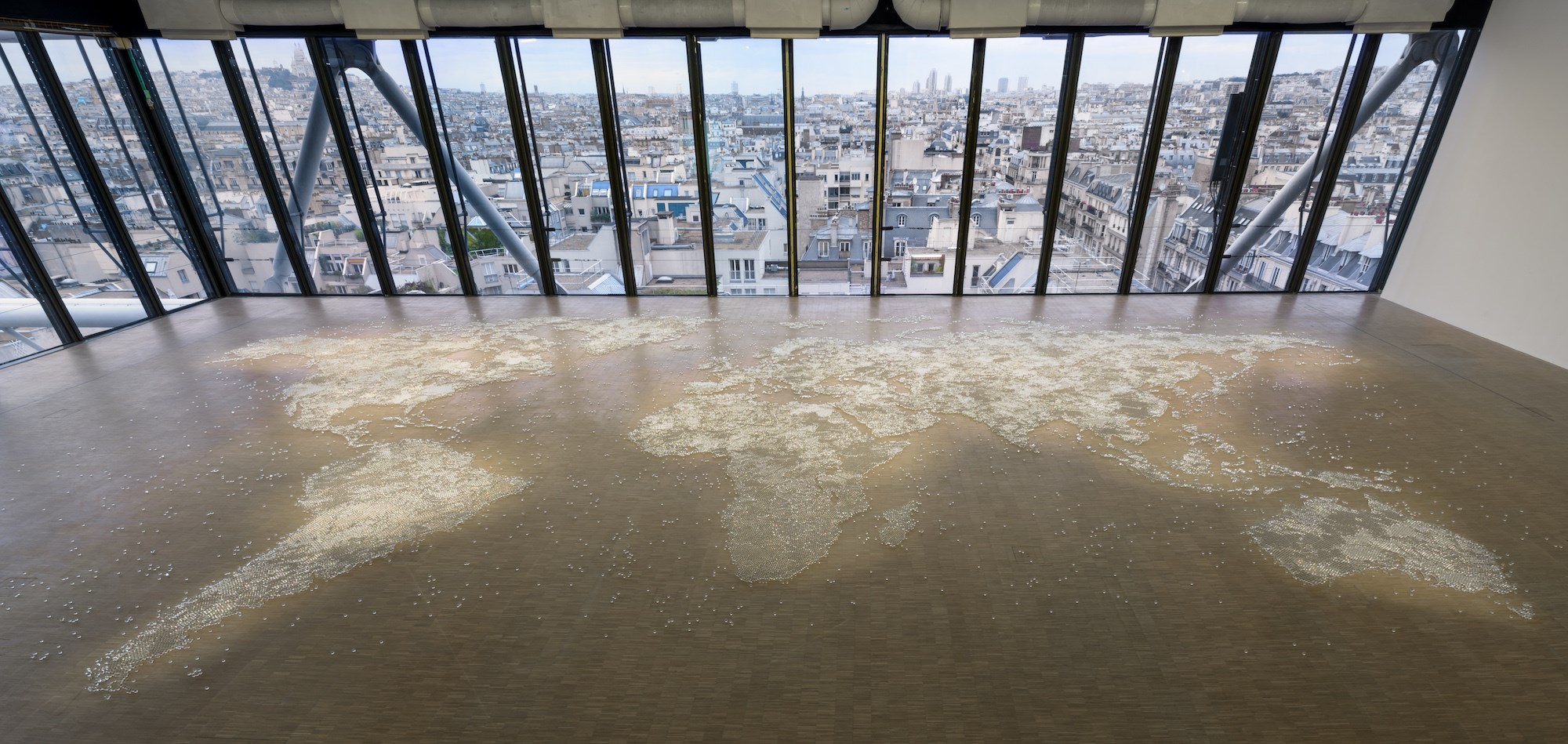PRESENTATION: Mona Hatoum-Map (clear)
Mona Hatoum’s poetic and political work incorporates installations, sculpture, video, photography and works on paper. Hatoum started her career in the 1980s making visceral video and performance work that focused intensely on the body. Since the early 1990s, however, she has increasingly created large-scale installations that aim to engage the viewer in conflicting emotions of desire and revulsion, fear and fascination.
By Efi Michalarou
Photo: Lehmbruck Museum Archive
In her sculptures, Mona Hatoum transforms familiar, every-day items such as chairs, cots and kitchen utensils into works that seem foreign, dangerous or even threatening. In installations such as “Corps étranger” (1994) and “Deep Throat” (1996) she defamiliarises the body by filming the interior landscape of her own body using an endoscopic camera. The expansive work “Map (clear)” (2023) by Mona Hatoum covers the entire floor area of the northern glass hall of the Lehmbruck Museum. Thousands of clear glass marbles form a fascinating yet disquieting map of the world that reflects on the extreme vulnerability of our environment. The human body and its senses are at the centre of Mona Hatoum’s work. She creates sculptures and installations whose visual beauty and perfection attract and repulse in equal measure. This significant piece is at once captivating and unsettling in its reflection of the precariousness of our environment. Mona Hatoum is part of a generation of artists who started to work more commonly across different media in order to best present their intended message. As such, her body of work is usefully considered alongside the likes of Louise Bourgeois, Eva Hesse, Ana Mendieta, and Rachel Whiteread, all of who exhibit an understated, and yet very powerful, understanding of the female body and the role that it plays within society. There is a sense in work by these artists that it is by looking to the stereotypical realms of the female, for example to the home, and to a domestic setting, where complex global issues may be reduced to a manageable size and as result better understood. Coming from a lineage of powerful matriarchal art figures, Hatoum’s work provides invaluable reference and inspiration for the next and new generation of female artists. According to her own personal story, her exile, and her direct experience of international conflict, the work of Hatoum is also influential for artists who explore political themes more directly. Indeed, her work has been an inspiration for Bob and Roberta Smith, Yannis Behrakis, and even the infamous Street Artist, Banksy. Born of the same generation, Ai Weiwei too reflects on his experience of conflict, exile, and of corrupt political agendas. Both Hatoum and Ai inform the public that political art continues to play a crucial role in society and that messages gleaned from art works do genuinely have the power to resolve conflict and thus move humanity forward.
Photo: Mona Hatoum, Map (clear), 2015, Clear glass marbles, Approx. 1000 cm x 1800 cm, Installation view, Centre Pompidou-Paris, © the artist, Courtesy Galerie Chantal Crousel, Paris, Photo: Florian Kleinefenn
Info: Lehmbruck Museum, Friedrich-Wilhelm-Straße 40, Duisburg, Germany, Duration: 26/5-20/8/2023, Days & Hours: Tue-Fri 12:00-17:00, Sat-Sun 11:00-17:00, https://lehmbruckmuseum.de/

